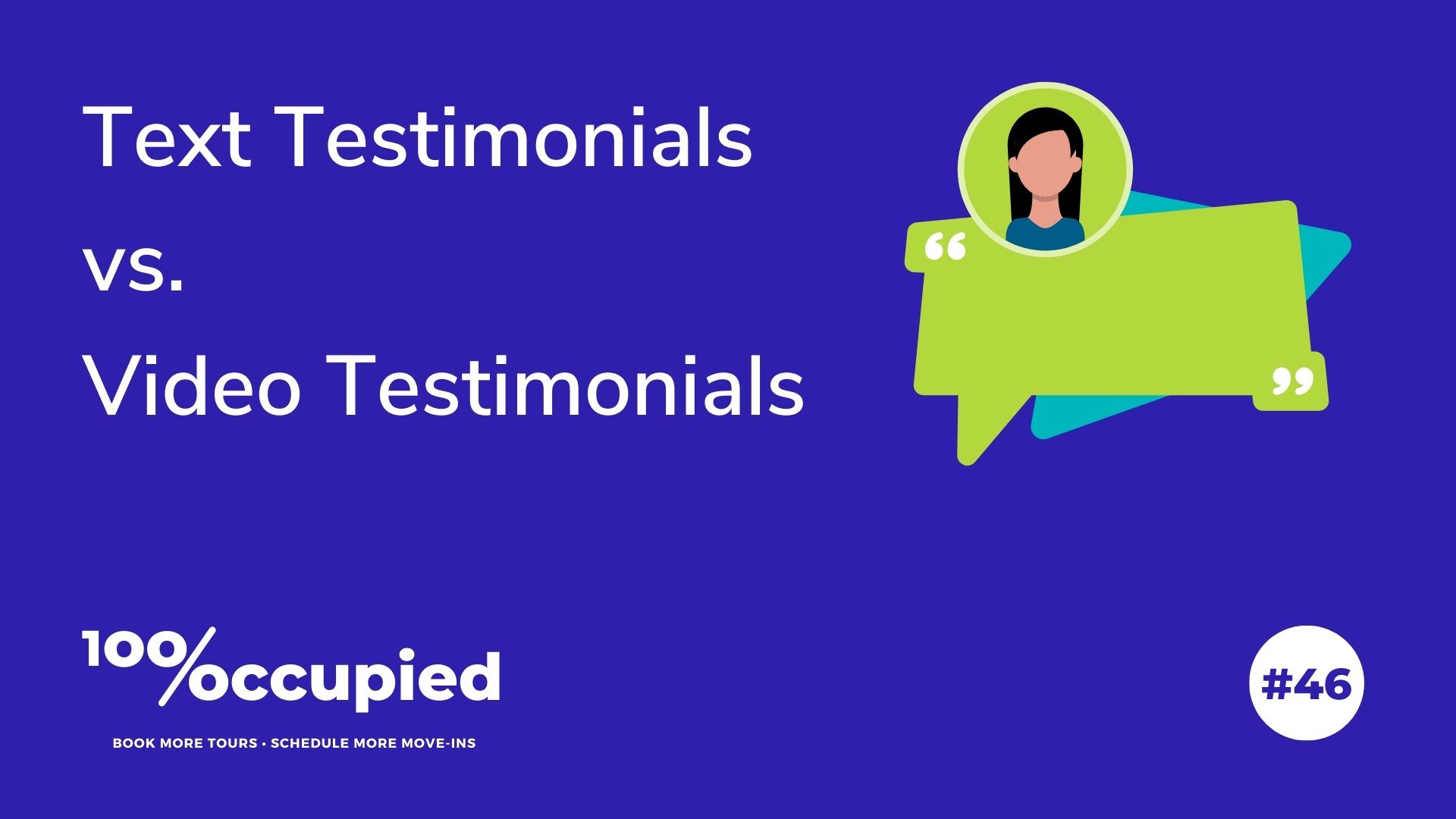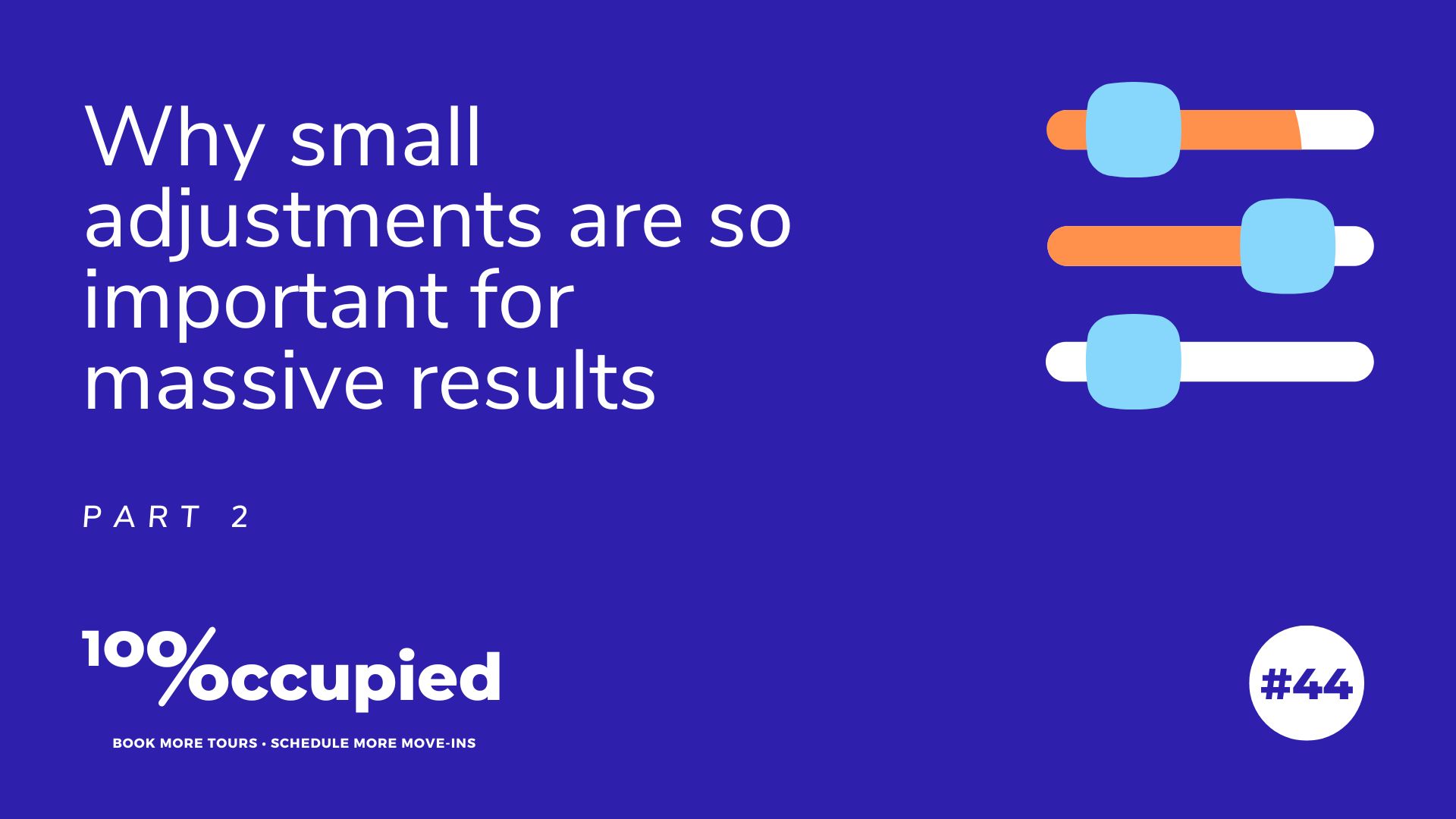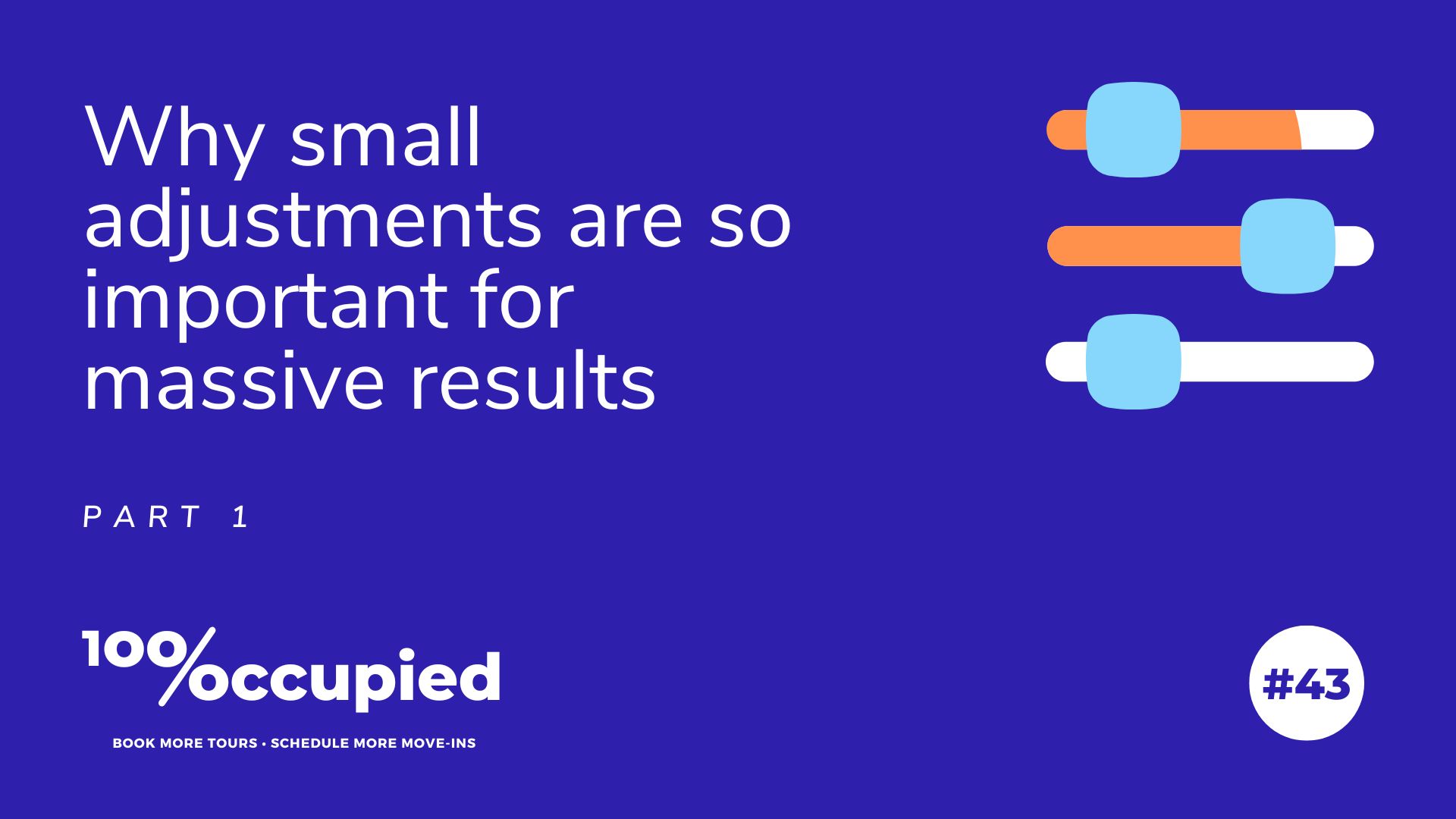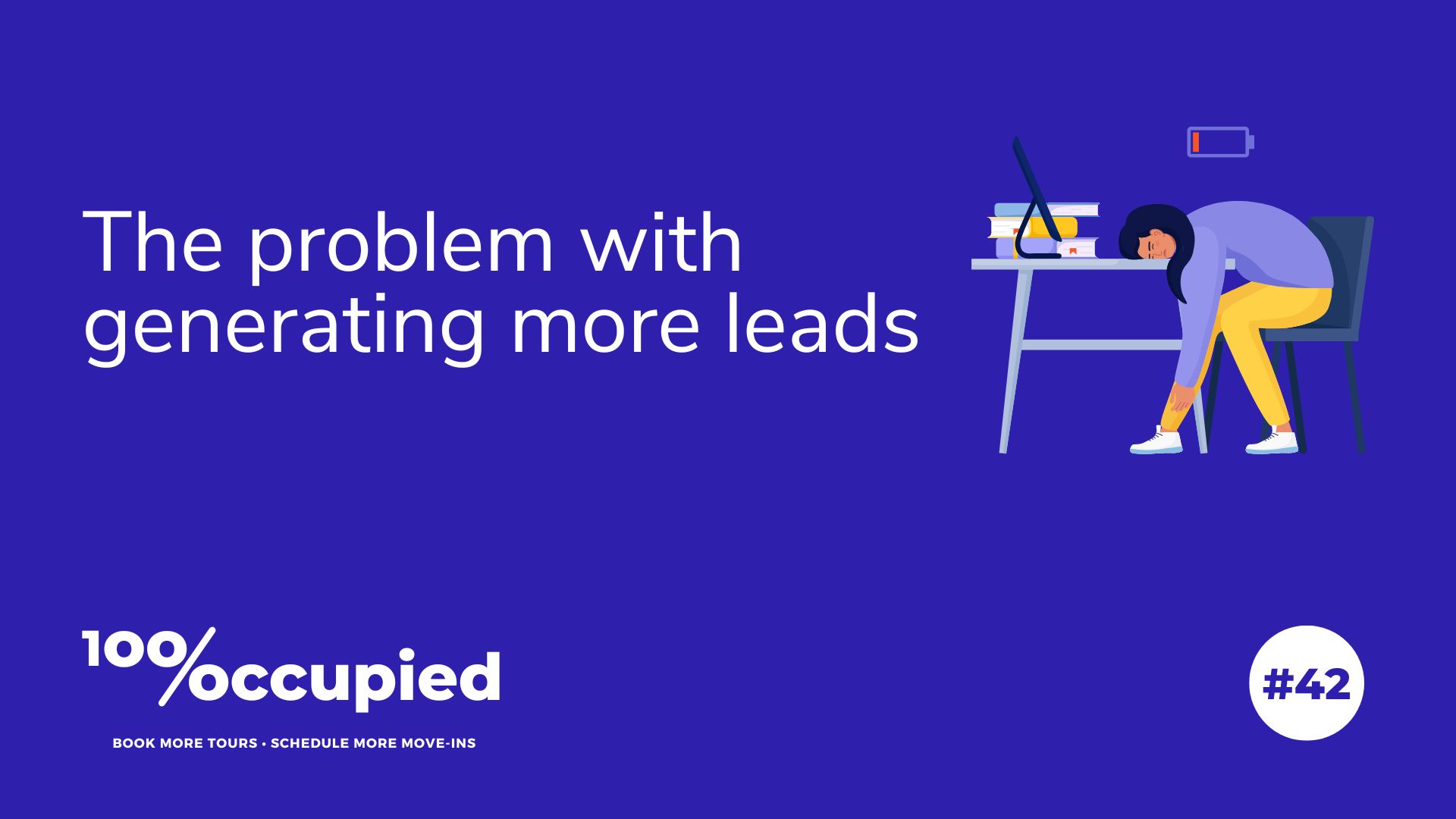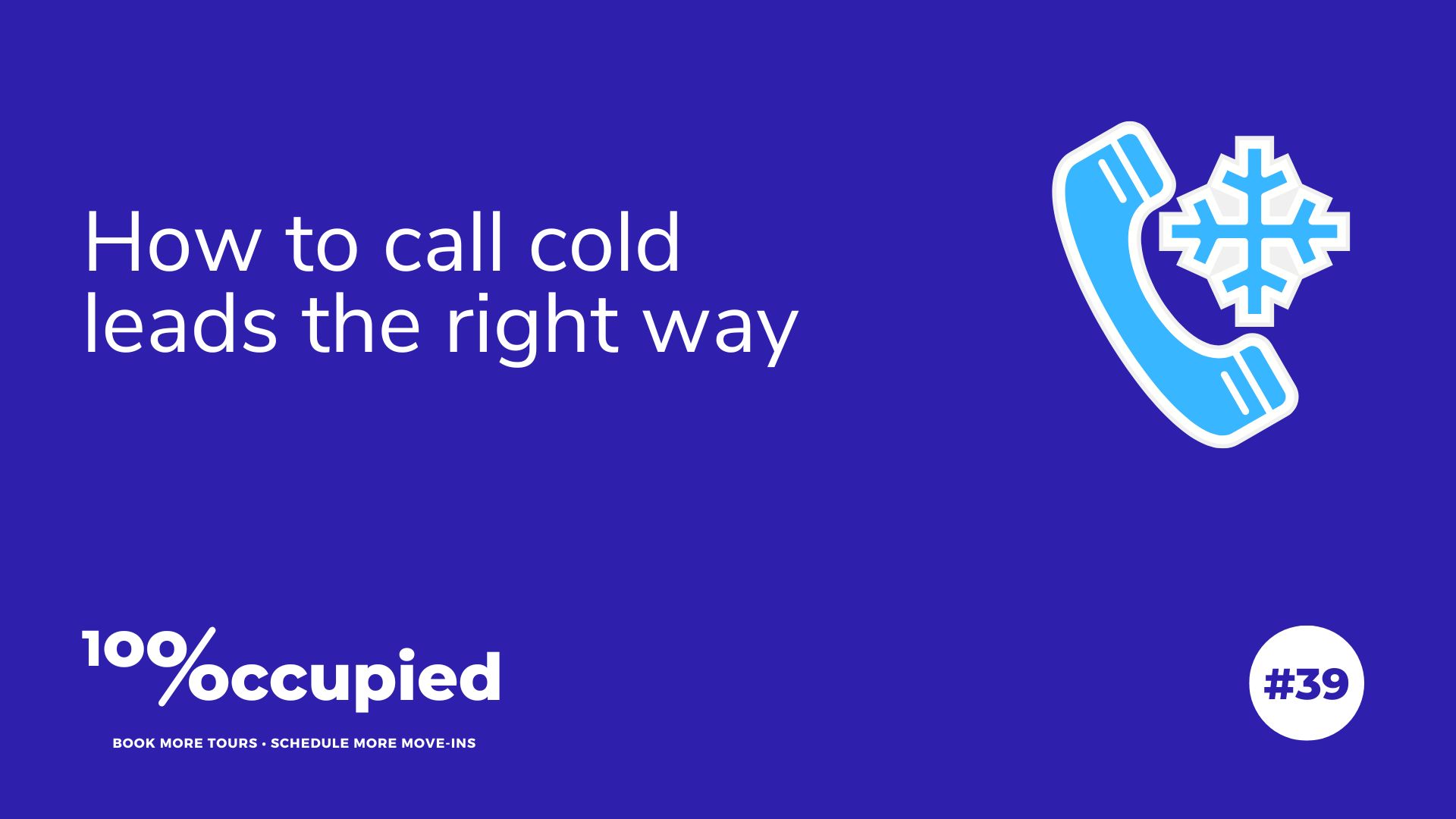Luke Adams: All right, welcome to this episode of the 100% Occupied Podcast. I’m really excited about the conversation that we’re going to have today. I would call it myself because there was a report that came out last week called “Senior Living Marketing in 2023.” And in case you want to download this report, read it for yourself, we’ll put the link into the show notes. I think all they needed is contact info. So you just put in your name, email, phone, and you can take a look at this report. But it was done by a group called Dreamscape and combined with Senior Housing News, and in 2023, they surveyed a bunch of directors, VPs, and people in the C-suite about senior living marketing. And there are some thoughts that Dallas and I had on some of their key takeaways that we want to chat about.
Dallas Shipp: Yeah. And I think that they had five key takeaways. And I’m going to list all five of these, Luke. We’re going to talk about one of them today. But just so you know, like what was in this report. So number one is that competition is the number one challenge among senior living marketers in 2023. There’s obviously new communities being built every day. Everyone knows that. And so it is much more competitive than it was even just a couple of years ago. So number two, takeaway is a creative digital strategy is paramount to success in today’s saturated marketing landscape. That’s what we’re going to focus on today. So I’m not going to talk about that a whole lot because that’s kind of our wheelhouse. Number three, senior living marketers need to prioritize online research in the years ahead because that’s the predicted top driver of census growth. And so what they mean by that is how do they target the adult children or the relatives or the friends or whoever’s helping these seniors find a community. How do they target them the right way? And I would agree with that. That is absolutely something that you should be working on. Number four, senior living organizations are willing to invest more in marketing. So it sounds like about nearly 40% say they’re increasing the marketing spend over the last 12 months and that 43% believe the increase will continue into 2024. Again, the more competitive it is, the higher the acquisition cost is going to be. And I think it was Donald Miller that was talking about the fact that it doesn’t matter what business you’re in, whoever can spend the most money to get a customer is going to win that marketplace. And then finally, their fifth takeaway is targeting third-party decision makers is critical. So this kind of ties into number three as well. But respondents indicated that the majority of their marketing focus is on third-party decision makers, but more than 88% say they are struggling with the challenge of marketing to those audiences. So that’s just kind of a snapshot of a lot of good data, a lot of good trend lines that you can pick up on and really analyze this against what you guys are doing in your company. How do you compare? I’d be curious to hear from some of you guys as well. If you email us or message us on LinkedIn or whatever. Let me take a look at this. What are your thoughts? What are your reactions? What do you see stand out to you as well? But today, what we’re going to talk about is that second key point, right? Everyone says we need a creative digital strategy, right? And one of the things that really stood out to us when we were looking at this, right? When you go through it, it’s on page nine. Okay, so what are people focusing on for their digital strategy? And kind of list out these different things. And at the very top is SEO and PPC paid search, digital advertising, and right behind that is social media. What do you think about that, Luke?
Luke Adams: I would say that’s probably where the focus has been?
Dallas Shipp: Is that right?
Luke Adams: Certainly. Yeah. Well, I mean, like, where, where you think it should be focused or where you think most people are focused?
Dallas Shipp: Well, no, just in your, I mean, because for those that don’t know, Luke and, you know, our background, I mean, Luke was in-house for a good-sized senior living company. I mean, did you feel like this has always been the focus as long as you’ve been?
Luke Adams: And PPC and social, and then on that chart right behind that is content marketing. So yeah, I mean, that has been the focus. That’s just been the name of the game. That’s where people have been pouring their money into those channels for years. So it’s not surprising. Well, it’s not surprising in a sense that that’s still the focus in 2023. But I’m sure we’ll talk later about maybe why that is still slightly surprising because there are some other things happening in marketing.
Dallas Shipp: I think the reason, and this may be one of those things, if you’re listening to this, and this may sound very, very simple for something that’s complex, but I do think that the root cause, the root issue here, is very simple. Because everyone spends so much time on, “We need more leads, we need more leads, we need more leads,” they don’t spend a whole lot of time, from what I’ve seen, and this is not just senior living, this is a weakness for a lot of businesses and a lot of industries, is they focus on leads and they don’t focus on how to handle those leads. Right? So, and we saw this when we mystery-shopped thousands of senior living community websites, right? 48% of the time, we never got any follow-up whatsoever. So how much money you got spent, I mean, and we didn’t click on a Google ad or anything to cost that click, we were just going through websites, but how many people clicked on an ad and came to your website that you paid, I don’t know, $20, $50, whatever your pay-per-click rate is, and they never interacted with your website, or they did fill out a form, they did become a lead, and no one ever followed up with them. So what’s interesting about this slide to me is that there’s three times as many people surveyed that are focused on SEO than marketing automation, and three times as many people that are focused on PPC and paid search and display ads than marketing automation. So what I would hypothesize here is that people have to think through the funnel, right? It’s not just about leads. I would venture to guess that most senior living community websites have enough web traffic to generate enough leads to keep your team busy with tours, right? The problem is the website’s not turning that traffic into enough leads, and then the leads that are coming in are not followed up with. Yep, does that make sense?
Luke Adams: Yep, totally makes sense. It reminds me of something that happened recently here in Kansas City. So Kansas City just got a brand new airport. It’s beautiful. It’s got all the bells and whistles, but for some reason, they built the departure lane too short and they didn’t add in enough lanes. And so you’ve got this beautiful airport now that people are coming to and then people are sitting in line to drop someone off at the airport for like 30, 40 minutes. So they spend all this money to make something beautiful, but then they don’t think about how do we have a system on the back end, so it’s a really great experience for everyone. That’s what’s happening here. You spend all this money to get more people to come to your website, but you don’t spend as much money on, okay, what about marketing systems? What about sales systems to make sure that when people do come to our site, we do follow up within one minute, two minutes, and we make sure we’ve got different things in place to keep them engaged, to get them into the community. I think obviously you and I would clearly agree focusing on SEO and PPC. That’s great, but there also needs to be a focus on what do we do when those leads come in.
Dallas Shipp: Well, I think you’ve got to break it down into sections, right? Like if, and we have a great calculator, Luke, maybe we can convert our spreadsheet into a little calculator on our website one day because I would love for people to go play with it. Whenever I’m talking to some of our partners, let’s just say you have SEO and PPC, and if you can increase that by, let’s just say, 5%, you’re getting 5. Let’s say you increase it by 10%. Well, then everything else stays equal, you can increase your opportunities by 10%. But if you increase that by 10% and then you increase your conversion of traffic into leads by 5% and increase the number of leads that turn into a tour by 5%, then it leads to massive 30%, 40% increases. I would challenge you, if you’re listening to this and you’re working on your digital plan, to not ignore the middle part of that funnel. What I mean by the middle part is, how do we get them from website visitors to lead to a scheduled tour or at least a phone call, some sort of one-on-one interaction, and then convert to a movement? So that basically from web lead to initial tour, what does your system look like? And really dive into that because how you follow up, how fast you follow up, not only that if you’re the first community to follow up with them, you’re five times as likely to get a movement out of it. So you’ve got to be fast because they’re reaching out to more than one at a time. And then the multiple touches are equally critical. For all the partners we work with across the country, if they’re an initial lead, so they download pricing or they’re starting to investigate your community, typically there are seven to nine text messages, emails, whatever different touches before they say, “Hey, yeah, I’ve got a question. I want to talk to somebody,” or, “Hey, I like that. Can I take a tour?” And so, you know, having that system in place, which, yes, we sell automated marketing automation, but the reason we sell it is because it works. Right? Like this is not us trying to sell you on something. It’s just this is what we’re really good at. And what we find when we see reports like this, it just stands out because it’s like, man, it’s it. You hate to see someone go spend thousands of dollars more for more leads when they could have spent just a few hundred dollars and converted the leads they’re already getting in. So, you know, just to be clear and transparent. Yes, this is what we sell.
Luke Adams: People out there need it.
Dallas Shipp: So. And again, go ahead.
Luke Adams: If you don’t have any of these systems in place and you spend all of your money on getting more leads coming in, how’s that going to affect your salespeople? They’re going to feel completely overwhelmed. The follow-up they currently have for their leads is going to, I mean, the quality of that is going to decrease. So yeah, it’s great to get more leads coming in, but at the same time, you’ve got to support your sales team with more systems, more people to help them manage those leads.
Dallas Shipp: So the… When I sound like a broken record, but, man, if you have not read “The Machine” by Justin Roff-Marsh, read the book. I mean, dividing up this labor because here’s the other part of this. As you’re building this system out, right, as you build this sales engineering process, as he calls it, if you crank up that SEO and then you add in the automation, it is going to inundate your salespeople with new leads, right? And so you do have to be mindful of this. And this is something that we consult our partners on all the time. So if you’re in the process of building this and you just want to have a discussion about, hey, how should this work? How should the leads go from lead form filled out to, you know, a system that handles, let’s say, 100, 200 leads a month and whittles that down to the 20 tours and maybe another 20 phone calls that the sales director can actually handle, how does that look? I’d be happy to sit on a call and chat about that, right? Because there is a, that there are some key things that you want to do that we can chat about and they kind of map out. And the reason I say also, it’s hard for us to talk about that, just sitting depth on a podcast is that there are different factors and different processes at play in different communities that you kind of just have to think through and also some of the ingrained culture and status quo. Sometimes you have to overcome more of that than others.
Luke Adams: Yeah, yeah, I don’t know if you have any other thoughts on the survey though. The only other thing I wanted to touch on as I’m sure we’ll talk more about this survey in other episodes is there are a couple of data points that talk about how many senior living companies are going to be willing to spend more money over the coming months. So the question says, “How do you expect your company’s marketing spend to change in the next 12 months?” 43% say it’s going to increase, 50% say it’s going to stay the same. And again, this is a marketing survey. They weren’t asked sales questions. But if you’re listening to this and you’re a VP or you’re managing the sales and marketing for communities, while you may be looking to increase your spend on marketing, you also need to be looking at increasing your spend on how do I help my salespeople through systems, through sales coaching. So whenever you start thinking about if you’ve got room to adjust your budget for this year, for next year, try to balance that out, find a good balance of getting more leads coming in, but also making sure we’re spending some of our budget on actually helping our salespeople with coaching and systems.
Dallas Shipp: Yeah, and I think that goes into it. Maybe this is maybe I’ll dive deeper into this next week, but I mean that is exactly what I was kind of talking about a while ago of examining your full sales process. The very top of the funnel is where the prospecting happens, right? The advertising, the content, all the stuff that drives people into the funnel. And yes, you got to focus on that. That’s a key focus. But then what’s that gap between that and the salesperson look like? And then what are you providing with the salesperson in order to close more of those opportunities? So that’s kind of three big areas. Traffic, increased traffic, increased conversion into tours, increased tours into movements, right? Keep it simple. Anyway, so maybe we’ll dive into what are the different components within each of those that you can, if you increase this by 1%, increase this by 4%, increase this by 5%, and I’ll get my little calculator spreadsheet out as well. We’ll share my screens if you’re going to watch it on YouTube or whatever, you can actually see it and see the impact of that as well. I like that actually.
Luke Adams: Well, that’s what we’ll do next week, Luke. So if you want to take a look at this survey, I’ll put the link to where you can download it in the show notes. But Dallas, I’ve enjoyed this conversation. I hope it’s open to our listeners.
Dallas Shipp: Absolutely. These are always fun. It’s always great to get feedback once in a while. We get emails or some notes. It’s always fun to hear from everybody out in the field.


